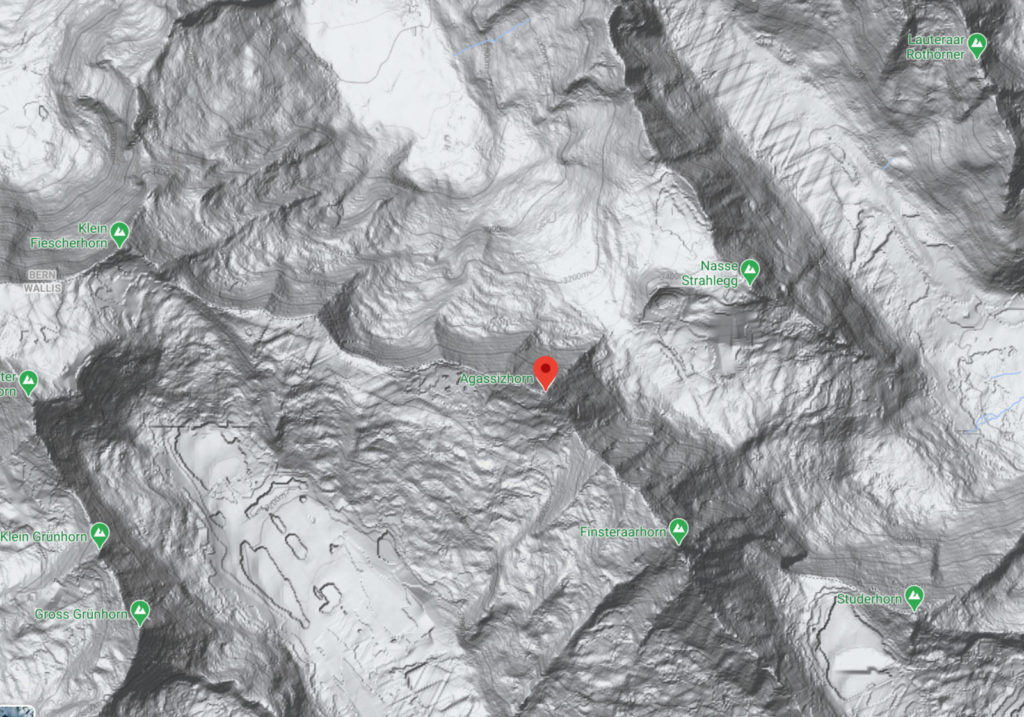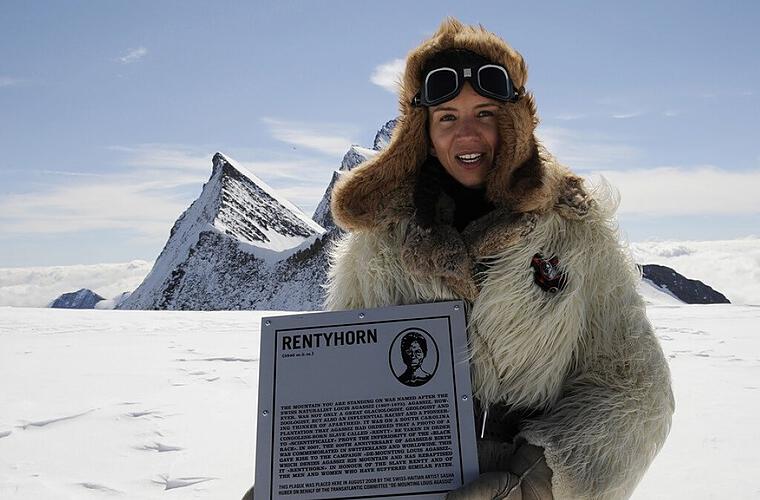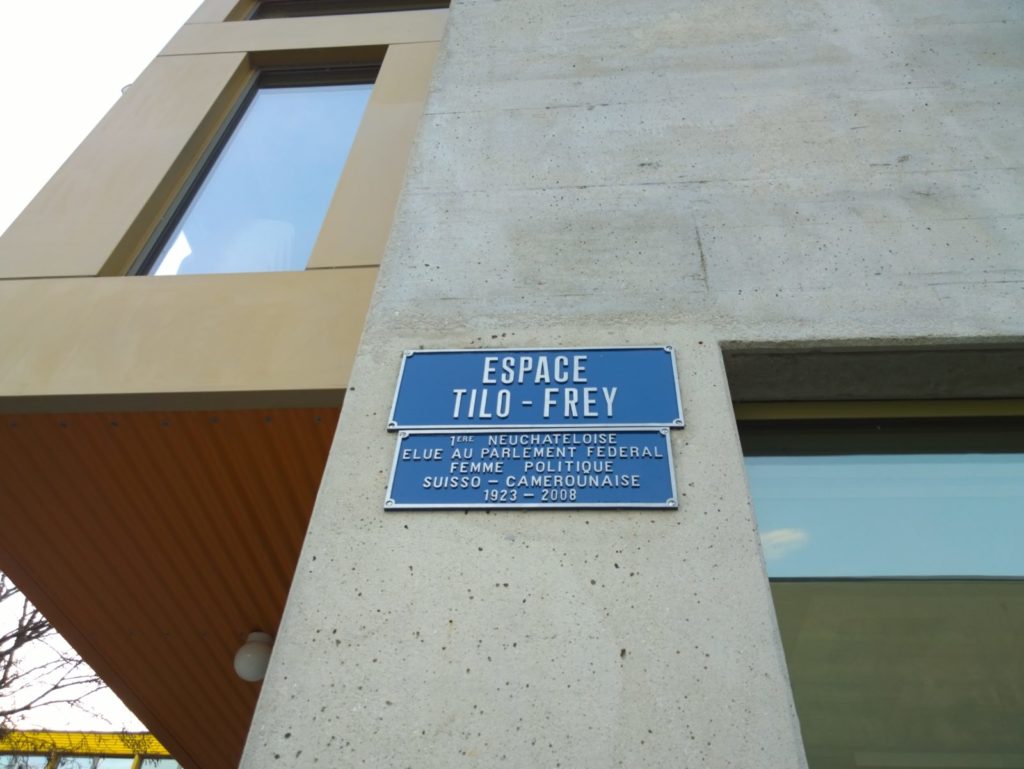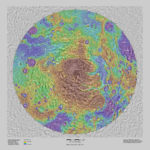Dismantle Louis Agassiz
Embedded racism at the near side of the moon. Par Roman Karrer
Texte
To survive,
Know the past.
Let it touch you.
Then let
The past
Go.
— Octavia E. Butler (June 22, 1947 – February 24, 2006)
From “Earthseed: The Books of the Living,” Parable of the Talents.
Mapping, naming and shaping the world
How we name places maps out and structures not only the physical but also the symbolic, the historical, and ideological landscape of the world we navigate in. By naming places after people, we embed their being and spirit in our oral language as well as in written, printed, and digital media. With this act, we help the person to carry on their myth and symbolic power and we give them and therefore their ideas and acts space. This article will look at the case of the spatial anchoring of the very problematic figure and racist Louis Agassiz and gather various findings around this personality. It is intended to criticize the haunting of this and other personalities whose names stand for structural racism, slavery, and or other crimes against humanity and whose names we no longer want to see and read on our maps, streets, mountains, squares, and spaces. With this small contribution, I want to intensify the pressure on the ones who are in response-ability1 The ones who have the power and position to rename these places. A pressure that has already been built up by others – a few of them are acknowledged in the author’s note at the end of the text – but which is still in need of support and popularisation.
Who is Louis Agassiz?
Almost 80 places around the globe are named after Louis Agassiz (1807-1873). For a long time, his scientific research was standing in the foreground. Gradually, historians began to focus more on his sinister side, although he was of course already criticised during his lifetime. Agassiz was born in 1807 in the canton of Fribourg in Switzerland. He studied medicine and natural sciences in Germany and Switzerland and was teaching at the Universities of Neuchâtel (1832-1846) and at Harvard (1847-1873), in the USA. In 1846 he emigrated to the USA and reaffirmed his antipathy towards African Americans. He became one of the main enemies of Darwin’s theory of evolution and contributed with his ideas to scientific racism. He considered black people as inferior and wanted to draw a line between blacks and whites and invented therefore a theory to justify a racial hierarchy that was used in the United States to legitimize segregation and by many individuals and collectives to justify violence.2
In the country of his birth, Switzerland, his name is deeply inscribed: Street names (Lausanne, La Chaux-de-Fonds), Rocks (Agassiz-Stone “La Pierre du Palet Roulant“, Mont-Vully) and a mountain (Agassizhorn) were and are named after him. Also abroad his name was and is still very present: Agassiz Rock (Scotland), Lake Agassiz (North America) and a whole District bears his name in Cambridge, Massachusetts. As if this would not be enough he even spooks around in outer space (Moon: Agassiz Promontory, Mars: Agassiz Crater).
The Agassizhorn
The Agassizhorn (3947 m a.s.l.) is a mountain in the Swiss Alps in the northwest extension of the Finsteraarhorn. Just beside it, there is another peak that is named Agassizjoch (3747 m a.s.l.). The English version of Wikipedia states: “The mountain was named after the Swiss geologist and explorer Louis Agassiz.”3 without mentioning anything of his terrible entanglements.

Since 2007, the committee “Démonter Louis Agassiz”, led by the activist and historian Hans Fässler, has been trying to convince the responsible municipalities (Guttannen, Grindelwald, and Fieschertal) to rename the mountain that is standing in their jurisdiction. The committee proposes to rename the mountain Rentyhorn. The suggested name derives from Renty Taylor, also known as Renty Thompson or Papa Renty4 (c. 1775–after 1865) who was kidnapped from Africa (Congo) and enslaved in South Carolina. He and his daughter Delia were “forced to pose for the daguerreotypes without consent, dignity, and compensation”5 by Louis Agassiz.
Unfortunately, the efforts have been fruitless up to now. The administration repeatedly rejected the proposal after several attempts by the committee (2007, 2010, 2016, 2020). A large part of the correspondence can be viewed and studied on their website6. The petition Rentyhorn7 is still going and can be signed and supported.
After the first negative responses from the side of the cities the visual artist of Swiss-Haitian heritage, Sasha Huber, installed a counter-monument8
I carried a metal plaque bearing a graphic representation of the slave Renty to the top of an Alpine peak, the Agassizhorn, on the borders of the Swiss cantons of Berne and Valais. In so doing, I took the first step towards renaming the mountain.9

Then after the summer of 2020, when the awareness and the general sensitivity regarding the political dimension of such monuments had increased, the committee again made an attempt. Unfortunately, the hope that the momentum would make the responsible persons rethink their initial position and finally act appropriately was without consequence and the symbolic power of what has been called “the mountain of shame”10 has not changed.
In the same year and as a consequence of a decision that was made in 2019, the city of Lausanne installed a plaque under the street name “Avenue Louis Agassiz” to raise awareness and inform the public about the extreme racism of Louis Agassiz.
The City of Neuchâtel, located around 100 km from the mountain top, acted in 2018/2019 with the renaming of the former “Agassiz Square” that now carries the name of Tilo Frey,11 (1923 – 2008) who was the first person of African descent (Cameroon) elected to the National Council in 1971 and one of the first twelve women in this position.

Also in other places and moments, small steps of reparation have been achieved. In one of his letters, Fässler lists the following achievements in addition to the ones already referred to:
- The Swiss Federal Council condemned the racism of Louis Agassiz several times (2007, 2015, 2020).
- In 2016, the Swiss Federal Council confirmed that Louis Agassiz may no longer be named as a cultural “ambassador of Switzerland” by “Presence Switzerland”.
- The European Geosciences Union (EGU) stopped awarding the “Louis Agassiz Medal” in 2018.
- In 2018, the Historical Dictionary of Switzerland replaced the Agassiz entry with a critical article that meets international standards.
For America, he has collected the following accomplishments:
- In 2002, the local school committee voted unanimously to rename the Agassiz School in Cambridge, Massachusetts, after Maria L. Baldwin, the first African-American female Head of School in New England.
- In 2020, the Cambridge City Council decided to initiate the renaming process of the neighbourhood named after Agassiz.
- In 2020, the Department of Psychology at Stanford University in California demanded the removal of the statue of Louis Agassiz from the façade of the Jordan Hall.
Embedded racism at the near side of the moon
In 2017 and 2020, Barth, Fässler and Huber again took action. This time it was about a place on the moon that was named “Agassiz Promontory” in 1935 by the International Astronomical Union (IAU) and its Working Group for Planetary System Nomenclature (WGPSN), which is based in Paris. In response to a confrontation with the agency in September 2017 asking it to rename the location “…it is no longer acceptable in the context of international space exploration that the name of a white supremacist and Nazi thinker be immortalized and honored in an elevation on the Moon.” the IAU showed itself little moved and consistently rejected the concern, and also refused to answer any questions about the motives behind the rejection. Until today the IAU did not engage in any discussion and left factual and formal arguments and information unanswered.
What is the International Astronomical Union (IAU)?
To standardize planetary nomenclature, the International Astronomical Union (IAU) was assigned in 1919 the task of selecting official names for features on Solar System bodies. Planetary nomenclature, like terrestrial nomenclature, is a system of uniquely identifying features on the surface of a planet or natural satellite so that the features can be easily located, described, and discussed. Since the invention of the telescope, astronomers have given names to the surface features they have discerned, especially on the Moon and Mars.12
When the committee asked the Swiss representative IAU member organization “Swiss Academy of Sciences (SCNAT)”, for help in 2020 in a second attempt after a first one made in 201813 they seemed to be more understanding, but then refused any involvement: “They would agree with the idea for renaming, but would not make such a request themselves.” The SCNAT later reconsidered and changed its position and wrote to the IAU with a clear statement and demand.14
Agassiz is not the only racist who got a place on the moon. Johannes Stark (1874-1957) and Philipp Lenard (1862-1947), both former Nazis, also received a place on the moon from IAU. In contrast, on the initiative of the physicist Mario Krenn, consequences followed and more appropriate action was taken. Charles Wood, chair of the Task Group for Lunar Nomenclature15, has recommended to the group that the names of Lenard and Stark “should be quickly replaced.”Philip Ball published an article16 on the subject in June last year.
Incidentally, when the IAU named a crater on Mars17 after Louis Agassiz in 1973, decades had already passed since the Mussolini admirer Ezra Pound and the Ku Klux Klan activist John Kasper had referred to Agassiz18 and Edward Lurie19 had publicly denounced Agassiz’s racism in his essay “Louis Agassiz and the Races of Man”20. Also this point has been part of Fässler’s argumentation.
In the light of these facts, the reaction and disinterest of the IAU remains confusing and incomprehensible. It remains obscure why in this case and after these arguments competent and appropriate (re-)action was and is refused.
Octavia E. Butler is taking root amongst the stars
On 18 February this year, NASA’s Perseverance rover landed a few thousand kilometers from the crater. The site where the spacecraft touched ground was named “Octavia E. Butler Landing”21 by the NASA, in memory of the science fiction author who died in 2006. The coordinates of the landing site on Mars are 18.4446° N 77.4509°E.

Thomas Zurbuchen, Associate Administrator for Space Science NASA commented the choice with the the following words:
I can think of no better person to mark this historic landing site than Octavia E. Butler, who not only grew up next door to JPL22 in Pasadena, but she also inspired millions with her visions of a science-based future. Her guiding principle, ‘When using science, do so accurately’23

Octavia E. Butler herself described the planet Mars in the following way:
Mars is a rock – cold, empty, almost airless, dead. Yet it’s heaven in a way. We can see it in the night sky, a whole other world, but too nearby, too close within the reach of the people who’ve made such a hell of life here on Earth.24
Butler’s work could hardly be more relevant to the issues dealt within this essay. An article about the event, found in the Guardian states out the following:
Butler, the first African American woman to win both the Hugo and Nebula awards, and the first sci-fi writer honoured with a MacArthur “genius” grant, is the author of novels including Kindred Bloodchild, as well as the remarkably prescient 1993 dystopia Parable of the Sower. The latter was set in the 2020s, where climate change and inequality have turned America into a place of chaos; its 1998 sequel, Parable of the Talents, sees a violent, far-right president ascend, promising to “make America great again.”25
With her novels, she draws hope and dystopia at the same time. And above all, her works show that the past is far from being overcome and a few developments are enough to find that what is supposedly been left behind is even more present. The last months have proven to us in a deeply moving and shocking way how much work is still to be done. Her work revolves around brutal violence, misogyny, class struggles, racism, social injustice, and inequality and draws a reality that we hope will remain fiction.
NASA’s naming of the Perseverance’s site is an unofficial one and it is to be hoped that the institutions described above will take over the name and help to anchor her name to honor her as a symbolic counterforce as a visionary and one who keeps warning and teaching us.
Taking root amongst the stars ✨ https://t.co/nle39JJDle
— Octavia E. Butler (@OctaviaEButler) March 5, 2021
Ultimately, it should be noted that, contrary to some voices, the renaming of such places is in no way intended to erase or to whitewash history. On the contrary. The places should serve us as a reminder not to forget and not to forgive. The obsolete names will always remain visible in the meta-information of these places. The renaming should be understood as an important sign of solidarity, that is marked and anchored in the now (after 20/21) where it seems to be evident enough that these names and with them these inhumane and degrading ideas must disappear. Once we know, we are responsible. Let’s not forget and yet overcome them. And for the future – let us be careful and prudent about how we navigate and name the world and what is beyond.
This essay is based on the archive and ongoing research and political activity of Hans Fässler, Hans Barth, Sasha Huber and others. Most of the information presented here is taken out of different documents found on the platform www.louverture.ch. The Person who wrote this text understands themselves more as a permutator, translator, or catalyst than as an author. The aim of this gesture is to amplify and ally with the investigation that Fässler, the comité “Démonter Louis Agassiz”26, and many others already brought to the surface in various forms and contexts and that is part of a bigger movement towards post-colonial repairing27 practices that question how to deal with and work on the past in the present.
Notes
- Here an explanation of Donna Haraway on the notion of response-ability “Like all of the words that feel vital in me now, these are words that come out of communities of practice; they are sym-poietic terminologies (madetogether-with: poiesis as making, sym as together-with). These terms and ideas are made together with many other people. When I speak about response-ability, I feel Astrid Schrader, Karen Barad, and Vinciane Despret emerging to the foreground. I feel like I’m channelling as well as weaving, knotting, crocheting. Response-ability is that cultivation through which we render each other capable, that cultivation of the capacity to respond. Response-ability is not something you have toward some kind of demand made on you by the world or by an ethical system or by a political commitment. Response-ability is not something that you just respond to, as if it’s there already. Rather, it’s the cultivation of the capacity of response in the context of living and dying in worlds for which one is for, with others. So I think of response-ability as irreducibly collective and to-be-made. In some really deep ways, that which is not yet, but may yet be. It is a kind of luring, desiring, making-with.”
– Anthropocene, Capitalocene, Chthulhucene Donna Haraway in conversation with Martha Kenney (https://static1.squarespace.com/static/53e3ff14e4b029aa443dd-0af/t/55806ee6e4b0fd31006b7ce0/1434480358842/ARTANTHRO_HARAWAY _PROOF.pdf). - A big part of the Information about his biography was taken from this article: Marie Vuilleumier “Rassentheoretiker Louis Agassiz macht einer Farbigen Platz” (https://www.swissinfo.ch/ger/umstrittene-persoenlichkeit_rassentheoretiker-louis-agassiz-macht-einer-schwarzen-platz/45025534), 13th June 2019
- See the article: https://en.wikipedia.org/wiki/Agassizhorn
- Also see: HARVARD COALITION TO FREE RENTY, https://www.harvardfreerenty.com/, and an article on the topic, Parul Sehgal “The First Photos of Enslaved People Raise Many Questions About the Ethics of Viewing” Published Sept. 29, 2020 The New York Times, https://www.nytimes.com/2020/09/29/books/to-make-their-own-way-in-world-zealydaguerreotypes.html
- Phrasing from this article: Ariella Azoulay, “Free Renty! Reparations, Photography, and the Imperial Premise of Scholarship” March 2, 2020, https://hyperallergic.com/545667/free-renty/
- See here: https://louverture.ch/agassiz-2020/
- See the website of the petition here: http://www.rentyhorn.ch/?lang=en
- Anti-monumentalism (or Counter-monumentalism) is a philosophy in art that denies the presence of any imposing, authoritative social force in public spaces. It developed as an opposition to monumentalism whereby authorities (usually the state or dictator) establish monuments in public spaces to symbolize themselves or their ideology, and influence the historical narrative of the place.(…) more about the term here: https://en.wikipedia.org/wiki/Anti-monumentalism.
- http://www.sashahuber.com/?cat=5
- See the documentary film Agassizhorn, Berg der Schande, by David Henzen, online: https://vimeo.com/ondemand/agassiz/304682514
- Matthias Daum, “Sie passte nicht ins Bild” https://www.zeit.de/2020/25/tilo-frey-fdp-politikerin-frauenwahlrecht-schweiz, ZEIT Schweiz Nr. 25/2020, 10. Juni2020
- https://en.wikipedia.org/wiki/Planetary_nomenclature
- https://archiv.louverture.ch/ARCHIV/archiv_2018.html
- The letter can be seen here: https://louverture.ch/wp-content/uploads/2020/11/Letter_IAU_Agassiz_Nov_2020.pdf
- To see the members and the task-groups for other planets see: https://planetarynames.wr.usgs.gov/Page/Members
- Philip Ball, “Astronomers unknowingly dedicated moon craters to Nazis. Will the next historical reckoning be at cosmic level?” June 26, 2020 (https://www.prospectmagazine.co.uk/science-and-technology/astronomists-unknowingly-dedicated-moon-craters-to-nazis-will-the-next-historical-reckoning-be-at-cosmic-level)
- https://planetarynames.wr.usgs.gov/Feature/81
- “… John Kasper (an anti-Semitic admirer of Hitler and a segregationist), who has been dismissed by most Pound biographers as a right-wing nut who misunderstood Pound’s work, was actually an astute reader of Pound and worked hard to put Pound’s ideas into political action. Kasper, whose letters to Pound run to 400 pages, was jailed several times for inciting violent opposition to school integration in the 1950s. Pound’s anti-Semitism is well known, but the multiculturalism of his Cantos has obscured the intensity of the racism he learned from Louis Agassiz-a racism focused on the dangers of racial ‘amalgamation’ and the resultant ‘decay’ of racial purity. (…)” Abstract: Alec Marsh “John Kasper and Ezra Pound Saving the Republic” 07-16-2015, Source: (https://www.bloomsbury.com/us/john-kasper-and-ezra-pound-9781472508867/)
- Lurie Edward (1927-2008) author of: “Louis Agassiz: A Life in Science.” (Chicago: University of Chicago Press. 1960. ) for more see: (https://www.historians.org/publications-and-directories/perspectives-on-history/september-2008/in-memoriam-edward-lurie)
- Edward Lurie “Louis Agassiz and the Races of Man“, 1954, See the first page of the essay here (https://www.journals.uchicago.edu/doi/abs/10.1086/348335)
- Butler, who died in 2006, authored such notable works as Kindred, Bloodchild, Speech Sounds, Parable of the Sower, Parable of the Talents, and the Patternist series. Her writing explores themes of race, gender, equality, and humanity, and her works are as relevant today as they were when originally written and published.
- Jet Propulsion Laboratory: https://en.wikipedia.org/wiki/Jet_Propulsion_Laboratory
- See here the official press release of the NASA, “NASA’s Perseverance Drives on Mars’ Terrain for First Time“ Published on Mar 6, 2021, https://www.nasa.gov/press-release/nasa-s-perseverance-drives-on-mars-terrain-for-first-time
- Octavia E. Butler, Parable of the Sower.(1993)
- Source: Alison Flood, “Perseverance Martian landing point named after Octavia E Butler” Wed 10 Mar 2021, The Guardian, https://www.theguardian.com/books/2021/mar/10/perseverance-martian-landing-point-named-after-octavia-e-butler#:~:text=Nasa’s%20naming%20of%20the%20Perseverance’s,to%20be%20honoured%20on%20Mars.
- Consisting of: Hans Fässler (St.Gallen, Switzerland), Hans Barth (Fribourg, Switzerland), Sasha Huber (Helsinki, Finland)
- “Reparations require a non-imperial temporality and agenda, one that insists that what is studied did not occur “in the past,” and that people’s right to see their worlds repaired is justified.” – Free Renty! – Reparations, Photography, and the Imperial Premise of Scholarship by Ariella Azoulay, Page 1. Link: http://desde-elmargen.net/wp-content/uploads/2020/12/Free-Renty-Ariella-Azoulay-.pdf

 Retour au sommaire
Retour au sommaire 


